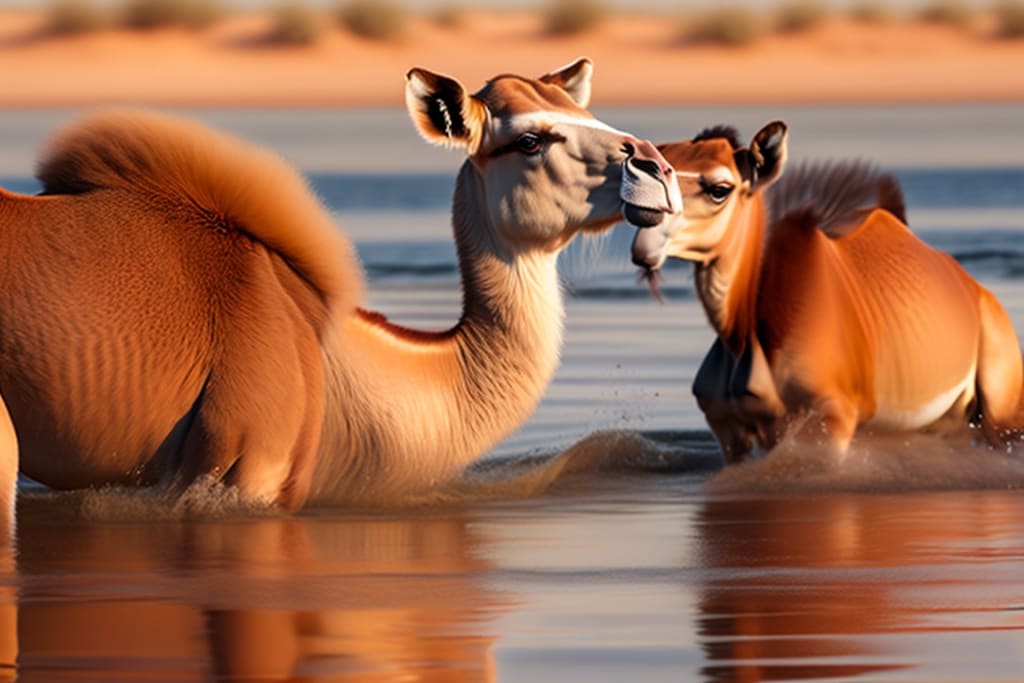Content warning
This story may contain sensitive material or discuss topics that some readers may find distressing. Reader discretion is advised. The views and opinions expressed in this story are those of the author and do not necessarily reflect the official policy or position of Vocal.
Debunking the Myth: Camels' Humps and Water Storage
Clarifying the Truth about Camels' Humps and Water Storage

Introduction :
Camels have traditionally been revered for their capacity to survive for lengthy periods without water in harsh desert regions. There is a myth that says camels can store water in their humps. According to this persistent myth, the humps serve as reservoirs that let camels live in areas with a lack of water. The truth, however, is much more fascinating. Camels' extraordinary humps are not water reservoirs; rather, they are energy reserves. We shall examine the biology of camels in this article, as well as the persistence of the misconception that they can store water in their hump.
The Adaptations of Camels :
Camels are members of the family Camelidae and have evolved to thrive in the arid desert. These amazing animals have developed a variety of physiological and behavioural adaptations that enable them to survive in dry settings. They can withstand intense heat, preserve water, and make effective use of resources thanks to their special characteristics.
The Truth about Camel Humps :
Contrary to popular perception, camels don't have water tanks in their humps. Actually, the humps are made of adipose (fat) tissue. When food and water are in short supply, camels can use this specialised tissue as a source of energy. It is possible to break down the fat in the humps, which gives camels the energy they need to endure protracted droughts or a lack of food.
Fat as an Energy Source :
Camels can go for long periods without water because of the fat content in their humps. When camels eat and drink, any extra nutrients are deposited as fat in their humps. Water is generated as a consequence of the fat's metabolism and is used by the camel's body. Even in the absence of external water sources, this process maintains important biological functions and helps to prevent dehydration.
Water Conservation Strategies :
Camels have developed a number of adaptations to help them retain water and reduce water loss. Their bodies retain more water due to their highly concentrated urine, which minimises water excretion. Furthermore, camels can adapt to large changes in body temperature, which enables them to conserve water by lowering sweating-related evaporative losses.
Water Intake and Rehydration :
Camels have a remarkable ability to hydrate themselves and consume water. When given the chance, they can drink a lot of water to rehydrate themselves and replace their body's water stores. Because to modifications to their mouth and throat, they may quickly ingest large amounts of water by sealing off water sources. Camel may consume up to 30 gallons ( 113 litres ) of water in just 13 minutes, according to studies.
The Origins of the Myth :
It was probably due to observations of camels' ability to survive in dry regions that the idea that they store water in their humps first emerged. People who saw camels live for long periods of time without external water supplies may have attributed this fortitude to water storage in the humps, resulting in the persistent myth that is still spread today.
Dispelling the Myth :
The idea of camels storing water in their hump has been thoroughly disproven by scientific inquiry and understanding. It is imperative to dispel this misunderstanding and a advance truthful awareness of these amazing animals' adaptations. Understanding the true purpose of the humps permits us to be in awe of the amazing energy storage system that allows camels to survive in some of the most hostile places on Earth.
Conclusion :
Finally, it should be noted that it is untrue that camels can store water in their humps. "Humps of a Camel"
About the Creator
Enjoyed the story? Support the Creator.
Subscribe for free to receive all their stories in your feed. You could also pledge your support or give them a one-off tip, letting them know you appreciate their work.






Comments
There are no comments for this story
Be the first to respond and start the conversation.